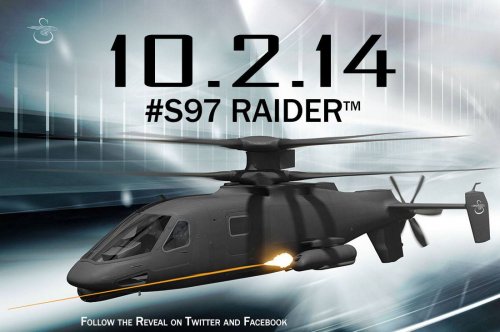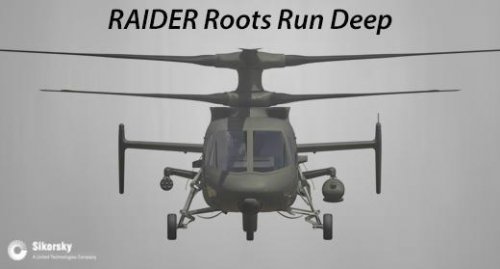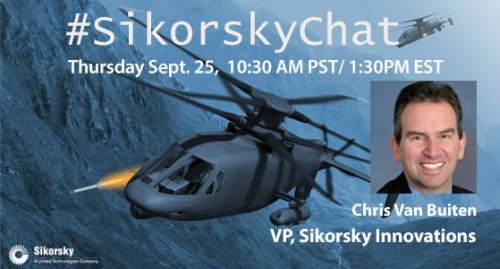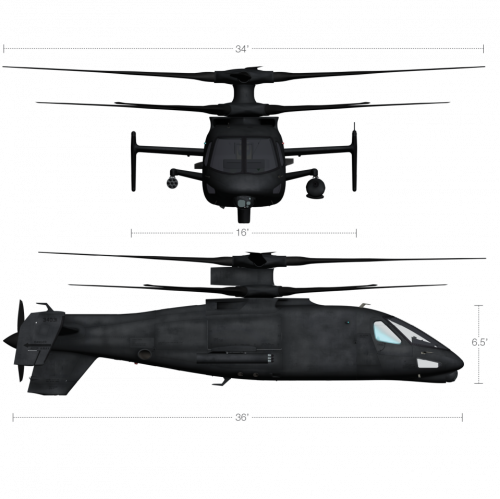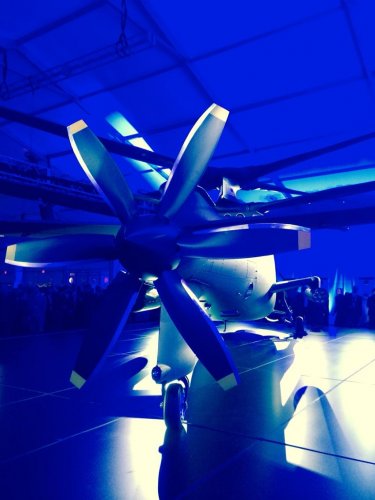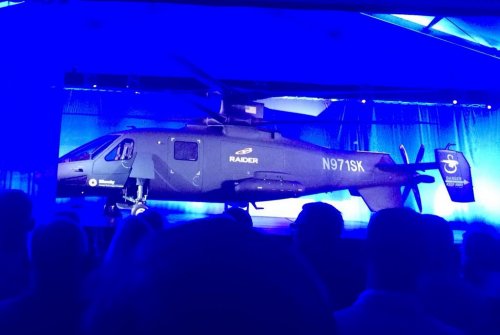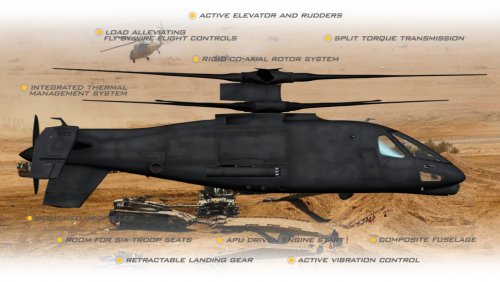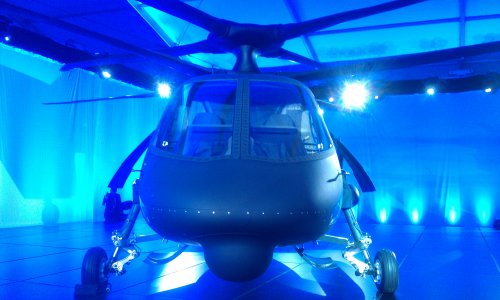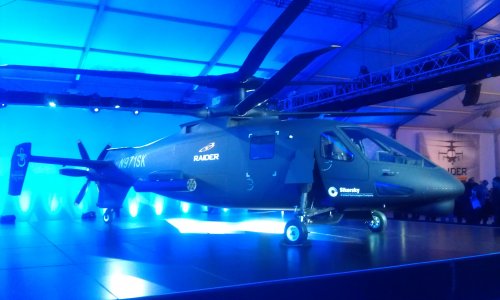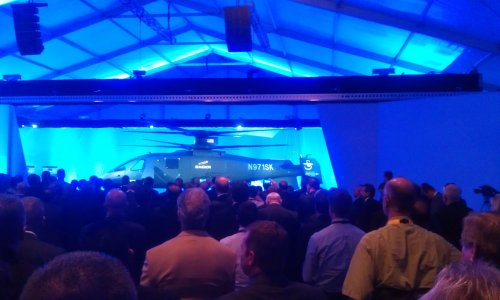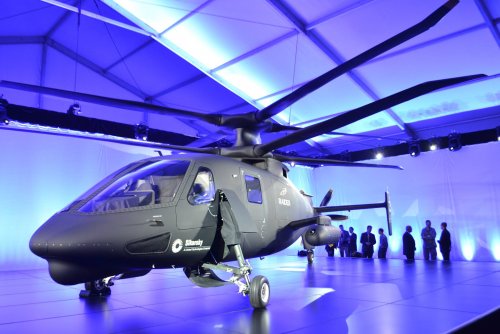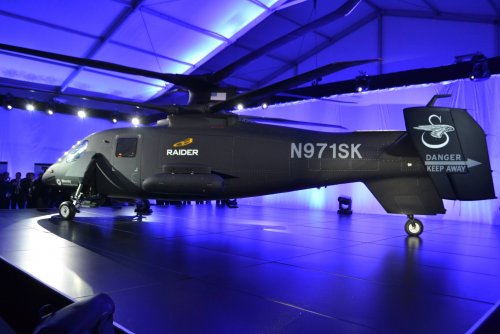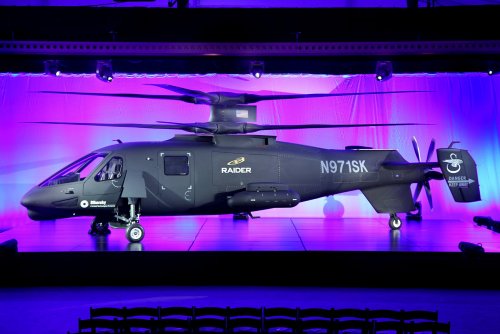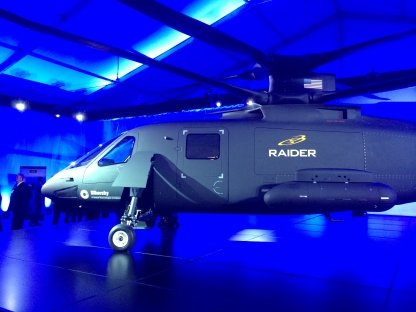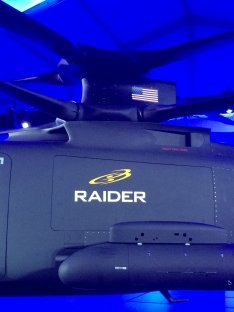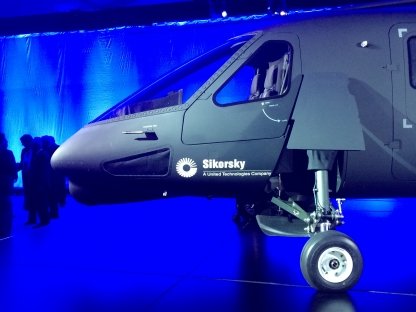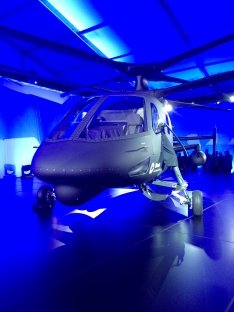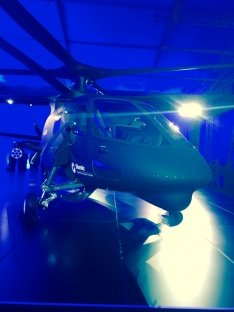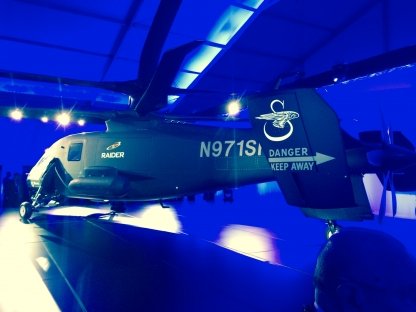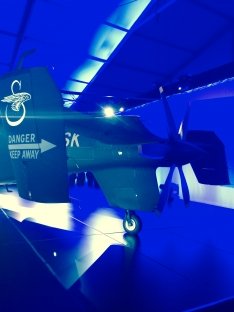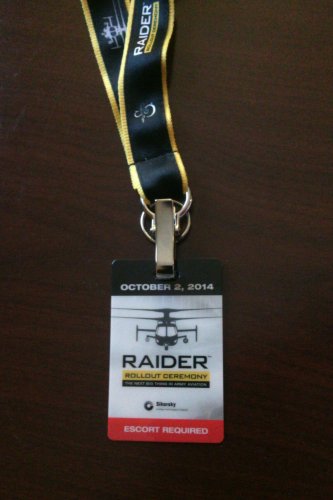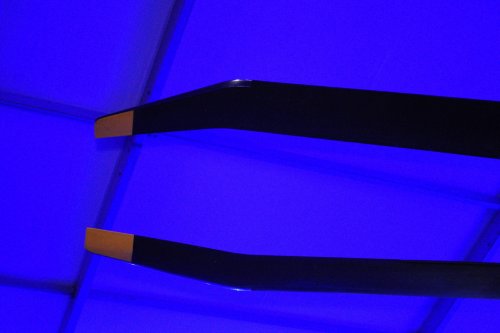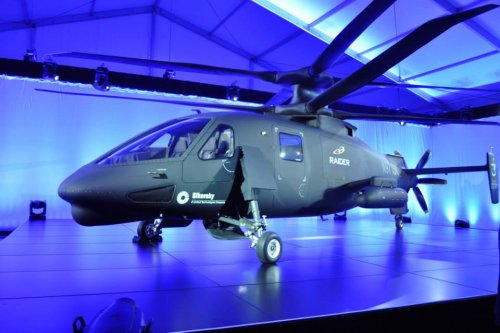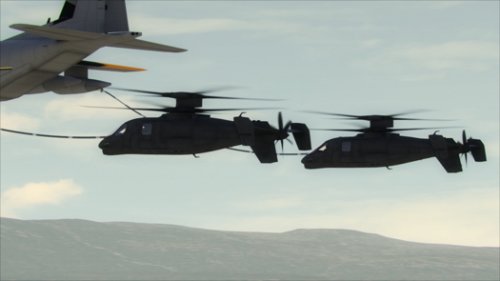You are using an out of date browser. It may not display this or other websites correctly.
You should upgrade or use an alternative browser.
You should upgrade or use an alternative browser.
Sikorsky S-97 Raider
- Thread starter Triton
- Start date
- Joined
- 3 October 2007
- Messages
- 1,960
- Reaction score
- 1,192
TomS said:So, it sounds like they are actually rolling out the completed aircraft on this date. Anyone know for sure?
There are rollouts and there are rollouts. A rollout does not mean an aircraft is completed and ready for flight, in fact in most cases it isn't. Sort of like a ship isn't actually ready for sea when it is launched.
I seriously doubt, though, that Sikorsky's rollout will be on the order of that famous rollout of seven years ago, so ably reported by that well-know aviation source, Al Jazeera:
http://www.aljazeera.com/investigations/boeing787/2014/09/fake-boeing-787-rollout-201491151725717514.html.
Bill Walker
Per Ardua ad Nauseum
This is hardly news. The first CL600 Challenger rolled out included a large number of cardboard parts. Nicely painted, but still cardboard.
Sikorsky has described the event on 10/02/14 as a S-97 Raider "reveal", which isn't promising much.
- Joined
- 4 July 2010
- Messages
- 2,510
- Reaction score
- 3,078
They have already rolled out their plastic mockup and taken it to several shows. The reveal is going to be of the first flying prototype, though it will still be a ways from flying it will be the real thing.
- Joined
- 16 April 2008
- Messages
- 9,581
- Reaction score
- 14,395
I expect the rollout to be pretty close to complete. In May, they were still talknig about first flight by December 1, 2014. I'm sure it could slip a bit, but they seem to be very intent on making a flight this year if at all possible.
- Joined
- 18 October 2006
- Messages
- 4,203
- Reaction score
- 4,880
These days software immaturity is as likely to delay first flight as material immaturity. I agree with TomS., that Sikorsky will do what they can to meet their plan. Of course a hovering helicopter is not necessarily analogous to an aircraft in test flight status.
Updates to the Sikorsky S-97 Raider web site.
Source:
raider.sikorsky.com/
Source:
raider.sikorsky.com/
Attachments
- Joined
- 18 October 2006
- Messages
- 4,203
- Reaction score
- 4,880
"UTC Aerospace Systems technology supports Sikorsky S-97 RAIDER™"
Oct 2, 2014
Source:
http://news.utcaerospacesystems.com/2014-10-02-UTC-Aerospace-Systems-technology-supports-Sikorsky-S-97-RAIDER
Oct 2, 2014
Source:
http://news.utcaerospacesystems.com/2014-10-02-UTC-Aerospace-Systems-technology-supports-Sikorsky-S-97-RAIDER
CHARLOTTE, N.C., Oct. 2, 2014 /PRNewswire/ -- UTC Aerospace Systems provides technology that supports the high performance of Sikorsky's new S-97 RAIDER helicopter. On-board the RAIDER™ during today's rollout ceremony in West Palm Beach, Florida were numerous systems provided by UTC Aerospace Systems. UTC Aerospace Systems and Sikorsky are units of United Technologies Corp. (NYSE: UTX).
The RAIDER helicopter is a light tactical rotorcraft designed to outmatch conventional military helicopters in speed, maneuverability, payload, range and high altitude operations. It employs Sikorsky's innovative X2® coaxial design, a fly-by-wire controlled helicopter that features counter-rotating main rotor blades for lift and forward flight, and a pusher propeller for high speed acceleration and deceleration.
"The RAIDER helicopter represents one of the most innovative new technologies in our industry," said Steve Peery, President of UTC Aerospace Systems' Engine Systems unit. "Our team is extremely proud to support Sikorsky and the U.S. Army as the program continues its development cycle and beyond."
UTC Aerospace Systems supplies essential equipment for the RAIDER's fly-by-wire flight control system, including the flight control computer, cockpit interface unit and cockpit remote processing unit. It integrates the entire propeller system, which includes the propeller gearbox and auxiliary propeller drive shaft. The company also provides actuation, air management and sensing systems.
UTC Aerospace Systems designs, manufactures and services integrated systems and components for the aerospace and defense industries. UTC Aerospace Systems supports a global customer base with significant worldwide manufacturing and customer service facilities.
United Technologies Corp., based in Hartford, Connecticut, provides high technology products and services to the building and aerospace industries.
S-97, S-97 RAIDER, RAIDER, and X2 are trademarks or registered trademarks of Sikorsky Aircraft Corporation.
yasotay said:And some more.
Nice pictures! Are you there at the reveal?
- Joined
- 16 April 2008
- Messages
- 9,581
- Reaction score
- 14,395
Triton said:
Interesting background in the last picture here -- that's a Merkava tank. Think they are looking at Israel as an export customer?
TomS said:Interesting background in the last picture here -- that's a Merkava tank. Think they are looking at Israel as an export customer?
Sikorsky has said that foreign militaries have been interested in the S-97 Raider, but never specified who. So it's very possible that Israel is one of those countries who is interested.
"Sikorsky Unveils S-97 Raider Helicopter"
Source:
http://www.prnewswire.com/news-releases/sikorsky-unveils-s-97-raider-helicopter-277911211.html
Source:
http://www.prnewswire.com/news-releases/sikorsky-unveils-s-97-raider-helicopter-277911211.html
WEST PALM BEACH, Fla., Oct. 2, 2014 /PRNewswire/ -- Sikorsky Aircraft, a subsidiary of United Technologies Corp. (NYSE: UTX), today unveiled the first of two S-97 RAIDER™ helicopter prototypes, signaling the start of activities in the program's test flight phase and a major step toward demonstrating the new – and first – armed reconnaissance rotorcraft featuring X2™ Technology designed for military missions.
"Today, Sikorsky unveiled the next generation of military rotorcraft, with capabilities and performance never seen before in our industry," said Sikorsky President Mick Maurer. "Just four years ago, we announced plans to build the S-97 RAIDER and teamed with some of the best companies in the industry, understanding the need to ensure aircraft development would not falter as government defense budgets shrank in response to economic pressures. Sikorsky is proud of its leadership in this area, and of the leadership the S-97 RAIDER represents among the world's military rotorcraft."
Based on Sikorsky's rigid X2™ rotor coaxial design, the S-97 RAIDER helicopter features next-generation technologies in a multi-mission configuration (armed aerial scout or light assault), capable of carrying six troops and external weapons. The coaxial counter-rotating main rotors and pusher propeller provide cruise speeds up to 220 knots (253 mph), more than double the speed of conventional helicopters. Sikorsky will offer the RAIDER™ aircraft as a replacement for the U.S. Army's OH-58D Kiowa Warrior helicopter fleet based on the Army's future operational and financial priorities, and for the special operations platform.
"Military rotorcraft fleets need maximum performance and increased capabilities to achieve their objectives," Maurer added. "The RAIDER delivers on that with its greatly improved maneuverability and speed, significantly improved high/hot hover performance, and greater range and endurance."
The single-engine RAIDER features a composite airframe and a maximum gross weight of slightly more than 11,000 lbs. The aircraft will be capable of carrying an array of weapons and sensors, necessary for the mission. The cockpit will fit two pilots, seated side-by-side. The flexible cabin space will carry up to six combat-equipped troops, or additional fuel and ammunition for extended missions.
"RAIDER marks the first unveiling of a new relevant rotorcraft configuration in 30 years," said Mark Miller, Vice President of Research & Engineering. "With the RAIDER program, Sikorsky has brought innovation to every aspect of the process, rethinking the way we design, build, test and support the product. We've kept a close eye on lowering development, production and support costs while increasing productivity and quality, and we are confident that the RAIDER is the solution for the future warfighter. We are looking forward to getting air under its tires and expanding the envelope in flight test in the coming months."
The RAIDER helicopter program is 100 percent industry funded. Sikorsky provides 75 percent of the investment, and 53 principal suppliers provide the remaining funding.
Sikorsky Aircraft Corp., based in Stratford, Connecticut, is a world leader in helicopter design, manufacture, and service. United Technologies Corp., based in Hartford, Connecticut, provides high technology products and services to the aerospace and building systems industries.
This press release contains forward-looking statements concerning opportunities for development, production and sale of helicopters. Actual results may differ materially from those projected as a result of certain risks and uncertainties, including but not limited to changes in government procurement priorities and practices, budget plans, availability of funding and in the type and number of aircraft required; challenges in the design, development, production and support of advanced technologies; as well as other risks and uncertainties, including but not limited to those detailed from time to time in United Technologies Corporation's Securities and Exchange Commission filings.
Photo - http://photos.prnewswire.com/prnh/20141002/150005
Logo - http://photos.prnewswire.com/prnh/20060403/SIKORSKYLOGO
SOURCE Sikorsky Aircraft
Source:
http://aviationweek.com/defense/gallery-sikorsky-reveals-new-s-97-raider#slide-3-field_images-1197111
http://aviationweek.com/defense/gallery-sikorsky-reveals-new-s-97-raider#slide-3-field_images-1197111
Attachments
- Joined
- 18 October 2006
- Messages
- 4,203
- Reaction score
- 4,880
Yes. Had the privilege to be invited.Triton said:yasotay said:And some more.
Nice pictures! Are you there at the reveal?
Attachments
October 2, 2014 unveiling ceremony of Sikorsky S-97 Raider, West Palm Beach, Florida — at Sikorsky Development Flight Test Center.
Source:
https://www.facebook.com/media/set/?set=a.10152548666255528.1073741866.80119815527&type=1
Source:
https://www.facebook.com/media/set/?set=a.10152548666255528.1073741866.80119815527&type=1
Attachments
-
 10423681_10152548672115528_1554349520514028692_n(1).jpg56.4 KB · Views: 26
10423681_10152548672115528_1554349520514028692_n(1).jpg56.4 KB · Views: 26 -
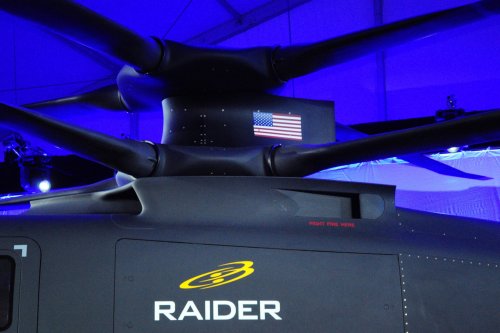 10604724_10152548682175528_7662438036914301326_o(1).jpg391.9 KB · Views: 51
10604724_10152548682175528_7662438036914301326_o(1).jpg391.9 KB · Views: 51 -
 615148_10152548671320528_2602233713061190787_o(1).jpg281.1 KB · Views: 58
615148_10152548671320528_2602233713061190787_o(1).jpg281.1 KB · Views: 58 -
 10626635_10152548670755528_1244288496057706699_n(1).jpg58.7 KB · Views: 58
10626635_10152548670755528_1244288496057706699_n(1).jpg58.7 KB · Views: 58 -
 10636209_10152548670765528_5164874332714926174_n(1).jpg44.2 KB · Views: 58
10636209_10152548670765528_5164874332714926174_n(1).jpg44.2 KB · Views: 58 -
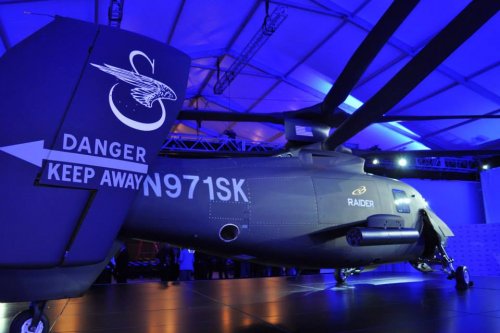 10458434_10152548671515528_5337639558315587174_n(1).jpg58.9 KB · Views: 43
10458434_10152548671515528_5337639558315587174_n(1).jpg58.9 KB · Views: 43 -
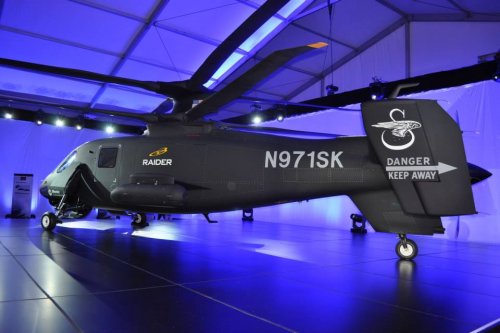 10399447_10152548671520528_1681779130531185688_n(1).jpg58.1 KB · Views: 45
10399447_10152548671520528_1681779130531185688_n(1).jpg58.1 KB · Views: 45 -
 10177527_10152548671695528_7438960138253924559_n(1).jpg67.7 KB · Views: 56
10177527_10152548671695528_7438960138253924559_n(1).jpg67.7 KB · Views: 56 -
 10632797_10152548671950528_4739538966523571168_n(1).jpg53.2 KB · Views: 48
10632797_10152548671950528_4739538966523571168_n(1).jpg53.2 KB · Views: 48
yasotay said:Yes. Had the privilege to be invited.
Congratulations!
- Joined
- 3 June 2011
- Messages
- 18,298
- Reaction score
- 12,117
yasotay said:Yes. Had the privilege to be invited.Triton said:yasotay said:And some more.
Nice pictures! Are you there at the reveal?
Dang. I'd have paid good scratch for you to snag me one of those lanyards.
"Sikorsky unveils first Raider prototype"
2014-10-02 16:45:57
by Elan Head
Source:
http://www.verticalmag.com/news/article/SikorskyunveilsfirstRaiderprototype
2014-10-02 16:45:57
by Elan Head
Source:
http://www.verticalmag.com/news/article/SikorskyunveilsfirstRaiderprototype
Four years ago, Sikorsky Aircraft announced plans for the S-97 Raider — a high-speed, coaxial-rotor compound helicopter based on the company’s X2 technology demonstrator. Sikorsky promised that the Raider, developed for the U.S. Army’s Armed Aerial Scout (AAS) program, would revolutionize the AAS mission, offering cruise speeds in excess of 200 knots without sacrificing the low-speed maneuverability of a traditional helicopter.
Last year, the Army put the AAS program on hold, determining that no existing aircraft met its requirements. Sikorsky and its more than 50 principal suppliers forged ahead, continuing their self-funded development of two Raider prototypes. Now, they have something to show for it. Sikorsky unveiled the first of the prototypes at an event in West Palm Beach, Fla., on Thursday, and the company remains optimistic that the aircraft will make its first flight by the end of the year.
“While the Armed Aerial Scout program is on hold for now, our commitment to the U.S. Army is not,” said Sikorsky president Mick Maurer at Thursday’s unveiling. “We said we would do it in four years, and we said we would do it without any government funding. We did it.”
With a maximum gross weight of 11,400 pounds (5,170 kilograms), the Raider will cruise at around 220 knots in an armed configuration, with an endurance of around 2.7 hours and a range of 370 miles (600 kilometers) with standard fuel. The Raider’s cockpit seats two pilots side-by-side, while its cabin will have space for up to six combat-equipped troops, or for internal auxiliary fuel tanks and extra ammunition.
Official literature for the Raider describes it as meeting the Army’s AAS hover-out-of-ground effect (HOGE) performance requirements of “6K/95” — hover capability at 6,000 feet mean sea level and 95 degrees F. In fact, it should significantly exceed these requirements, with Sikorsky’s director for Advanced Military Programs, Steve Engebretson, predicting HOGE capability at 10,000 feet at the same temperature.
Sikorsky said the Raider's performance should allow it to refuel in flight at speeds and altitudes much higher than those typically used for helicopter aerial refueling. Sikorsky Image
The statistics only tell part of the story, however. The Raider’s revolutionary design offers more than speed — it promises capabilities not found in any conventional helicopter.
For example, because the aircraft’s clutched rear pusher propeller is operated independently of its main rotors, the Raider can hover with its nose pointed up or down, and accelerate rapidly in a level attitude. According to Andreas Bernhard, the program’s chief engineer, the propeller can be engaged in any flight regime, and can remain disengaged to lower the noise signature for stealth missions (in which configuration the Raider should have a top speed slightly higher than that of most conventional helicopters).
Moreover, there are software commonalities between the fly-by-wire Raider and Sikorsky’s Matrix autonomy research program — opening the door to optionally piloted and unmanned applications in the future.
“Raider marks the first unveiling of a new relevant rotorcraft configuration in 30 years,” stated Sikorsky vice president of Research and Engineering Mark Miller. “We are looking forward to getting air under its tires and expanding the envelope in flight test in the coming months.”
Despite the cancellation of the U.S. Army's AAS program, Sikorsky is betting that the Raider will have eager customers. Sikorsky is funding 75 percent of the program; its 53 industry partners are funding the remaining 25 percent. Sikorsky Image
With the Raider’s software configuration locked down and substantial systems testing already complete, Sikorsky still expects the aircraft to fly by the end of the year, as originally planned. As there are no customer orders for the aircraft at present, the initial flight-test program is expected to encompass less than 100 flight hours.
However, Sikorsky has made it clear that the Raider represents a “practical air vehicle” — unlike the X2 technology demonstrator, which was permanently retired after just 23 flights. Beyond performance, the Raider’s design process has focused on aspects that are critical in production aircraft, such as cockpit ergonomics and crashworthiness.
“We’ve kept a close eye on lowering development, production and support costs while increasing productivity and quality,” stated Miller, calling the Raider “the solution for the future warfighter.” Whatever the future may hold in store for the Raider, “We’re confident it was a risk worth taking,” he said.
Attachments
"LORD UltraConductive technology to serve on Sikorsky S-97 Raider"
2014-09-18 08:57:48
LORD Corp. Press Release
Source:
http://www.verticalmag.com/news/article/LORDUltraConductivetechnologytoserveonSikorskyS97Raider
2014-09-18 08:57:48
LORD Corp. Press Release
Source:
http://www.verticalmag.com/news/article/LORDUltraConductivetechnologytoserveonSikorskyS97Raider
Sikorsky Aircraft has selected LORD Corp.’s UltraConductive films and coatings for lightning strike protection for the S-97 Raider program. Sikorsky plans to host a rollout ceremony for the S-97 in early October.
The Sikorsky program requires LORD to provide technical support and education on how to use UltraConductive solutions across the Sikorsky platform for direct lightning strike protection, grounding of fasteners, and manufacturability.
At 35 to 55 percent the weight of expanded copper foil solutions, LORD UltraConductive materials offer equivalent lightning protection for composite structures. The highly-conductive epoxy film or coating utilizes non-nano, commercial materials to protect composite aircraft structures from a direct lightning strike. The surfacing film also is used to provide Zone 2A lightning strike protection on aircraft. It can be hand-applied or automated, using conventional tape-layup machines or automotive-grade paint robots.
In 2013, Sikorsky and LORD put UltraConductive film through a range of strike test configurations and secondary properties testing. Now in 2014, Sikorsky suppliers have already begun building first hardware for the Raider, including the propeller and fairing, using LORD UltraConductive film.
An additional OEM has UltraConductive film on aircraft in flight and several more OEMs will fly it before 2015, according to Justin Bryan, business development manager for LORD. The S-97 Raider program involves the design of two next-generation helicopter prototypes for evaluation by the U.S. military.
- Joined
- 16 April 2008
- Messages
- 9,581
- Reaction score
- 14,395
bobbymike said:Could the 'wings' be larger to accommodate larger weapon suite, like Hellfire and 2.75" rockets?
They have shown 7-round 70mm (2.75") rocket pods with what look to be APKWS guided rockets. The Sikorsky website also mentions Hellfire -- probably two rounds per side, which would weigh a little more than the rockets.
Similar threads
-
-
-
-
Sikorsky Long-Range Hybrid-Electric VTOL Demonstrator (HEX)
- Started by VTOLicious
- Replies: 5
-

